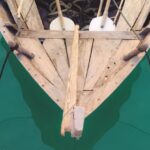Creating a topographic map from scratch may seem like a daunting task, but with the right tools and techniques, it can be a rewarding and insightful process. Whether you need a topographic map for a school project, outdoor adventure planning, or professional purposes, following these steps will guide you through the process of making your own topographic map.
Understanding Topographic Maps
Before diving into the creation process, it’s essential to have a clear understanding of what a topographic map is. Topographic maps are detailed representations of a landscape that use contour lines to show the elevation and shape of the terrain. These maps provide valuable information about the natural features of an area, such as mountains, valleys, rivers, and forests.
Gathering Materials and Tools
To create a topographic map from scratch, you will need certain materials and tools. Start by gathering a large piece of paper or a digital drawing platform, such as a computer program or app. You will also need a ruler, a pencil, an eraser, and colored pens or markers to differentiate between elevation levels on your map.
Mapping the Terrain
The first step in creating a topographic map is mapping the terrain of the area you want to represent. If you are working with a physical map, use a ruler and a pencil to sketch the basic outline of the landscape, including major features like mountains, valleys, and bodies of water. For digital maps, you can use drawing tools to trace the contours of the terrain.
Adding Contour Lines
Contour lines are the key feature of a topographic map, as they represent changes in elevation. To add contour lines to your map, start by identifying the elevation intervals you want to use. Common intervals are 10 meters, 20 meters, or 50 meters, depending on the scale of your map and the complexity of the terrain. Use your ruler and pencil to draw contour lines at each interval, following the natural shape of the landscape.
Labeling Features
Once you have added contour lines to your map, it’s time to label the features of the terrain. Label major landmarks such as mountains, rivers, and forests, as well as any other points of interest that you want to include on your map. Use clear, legible lettering and consider using different colors or symbols to differentiate between different types of features.
Adding Detail
To make your topographic map more informative and visually appealing, consider adding additional detail to the landscape. You can include symbols for roads, trails, buildings, and other man-made structures, as well as vegetation types and land use patterns. Adding these details will enhance the overall accuracy and usefulness of your map.
Fine-Tuning and Reviewing
Once you have completed the initial draft of your topographic map, take some time to fine-tune and review your work. Check for any errors or inconsistencies in the contour lines, labeling, or detail, and make any necessary corrections. It’s also a good idea to have someone else review your map to provide feedback and suggestions for improvement.
Sharing Your Map
After you have finalized your topographic map, you can share it with others for feedback or use it for your intended purpose. Whether you created the map for a school project, outdoor adventure planning, or professional presentation, sharing your work can help others appreciate the beauty and complexity of the natural landscape.
In Conclusion
Creating a topographic map from scratch is a rewarding and educational experience that allows you to explore the intricacies of the natural world. By following these steps and using your creativity and attention to detail, you can make a topographic map that is both accurate and visually appealing. Whether you are a student, outdoor enthusiast, or professional cartographer, the process of making a topographic map can deepen your understanding of geography and landscape features. So, grab your materials and start mapping out the world around you!





